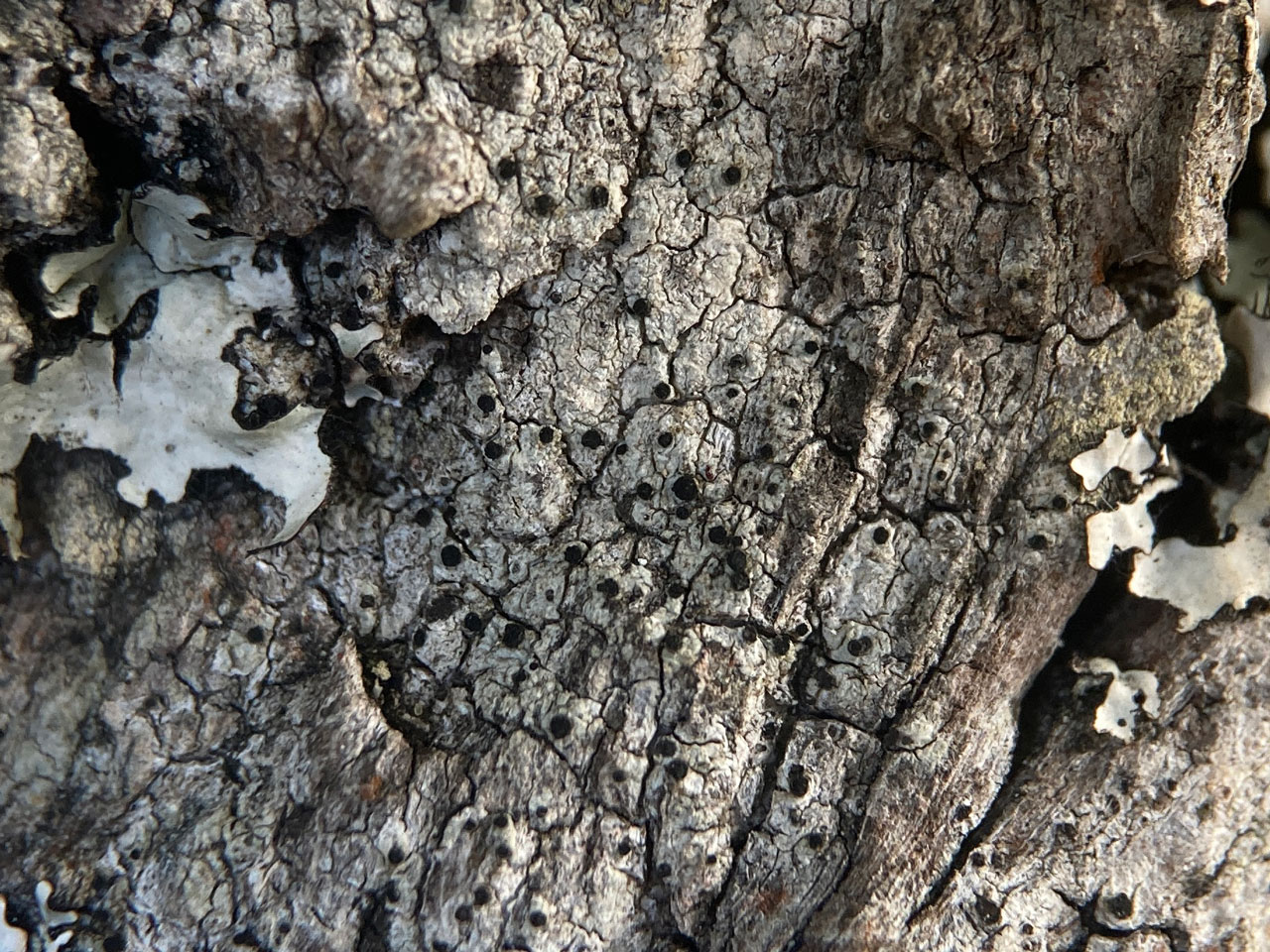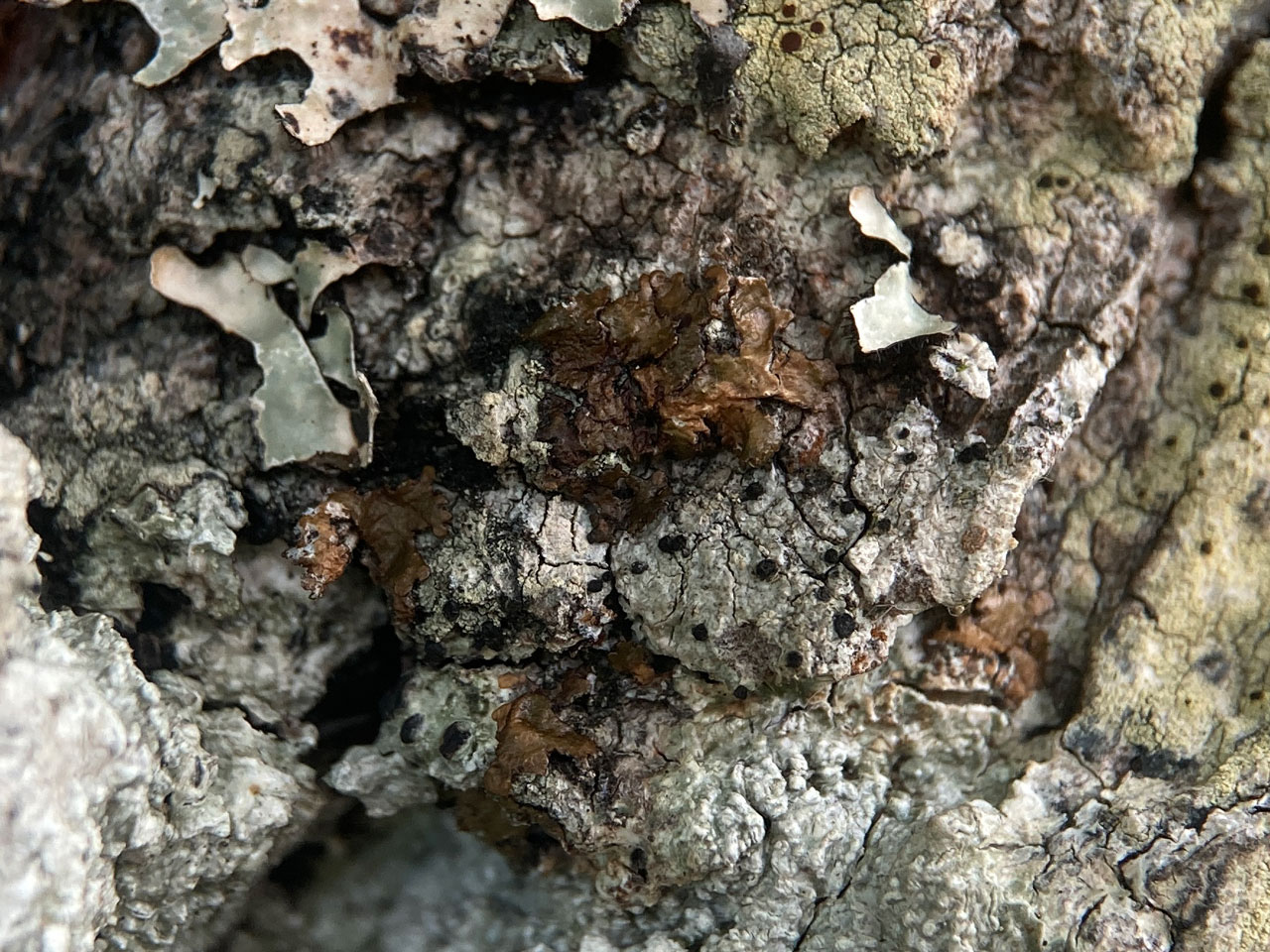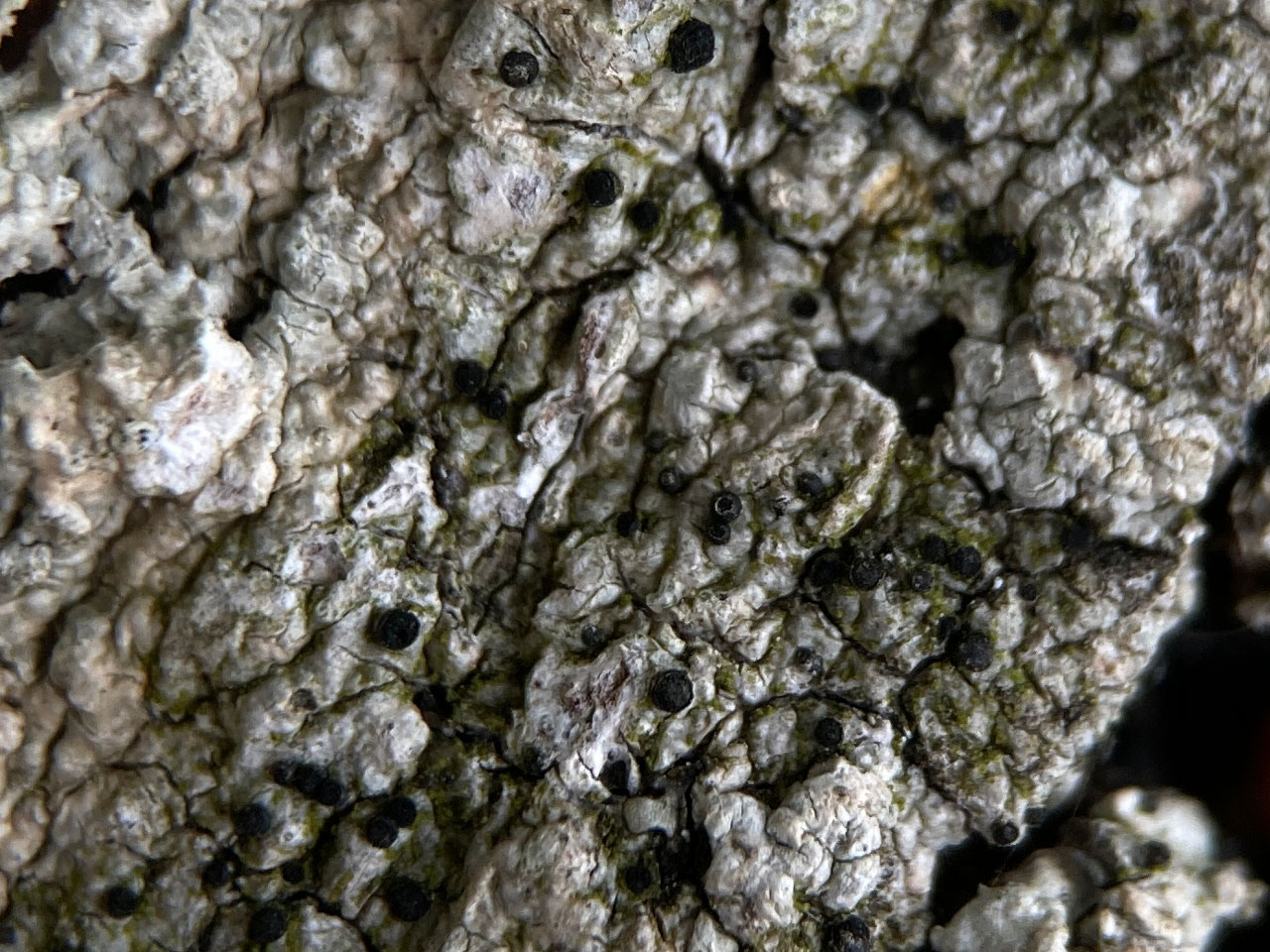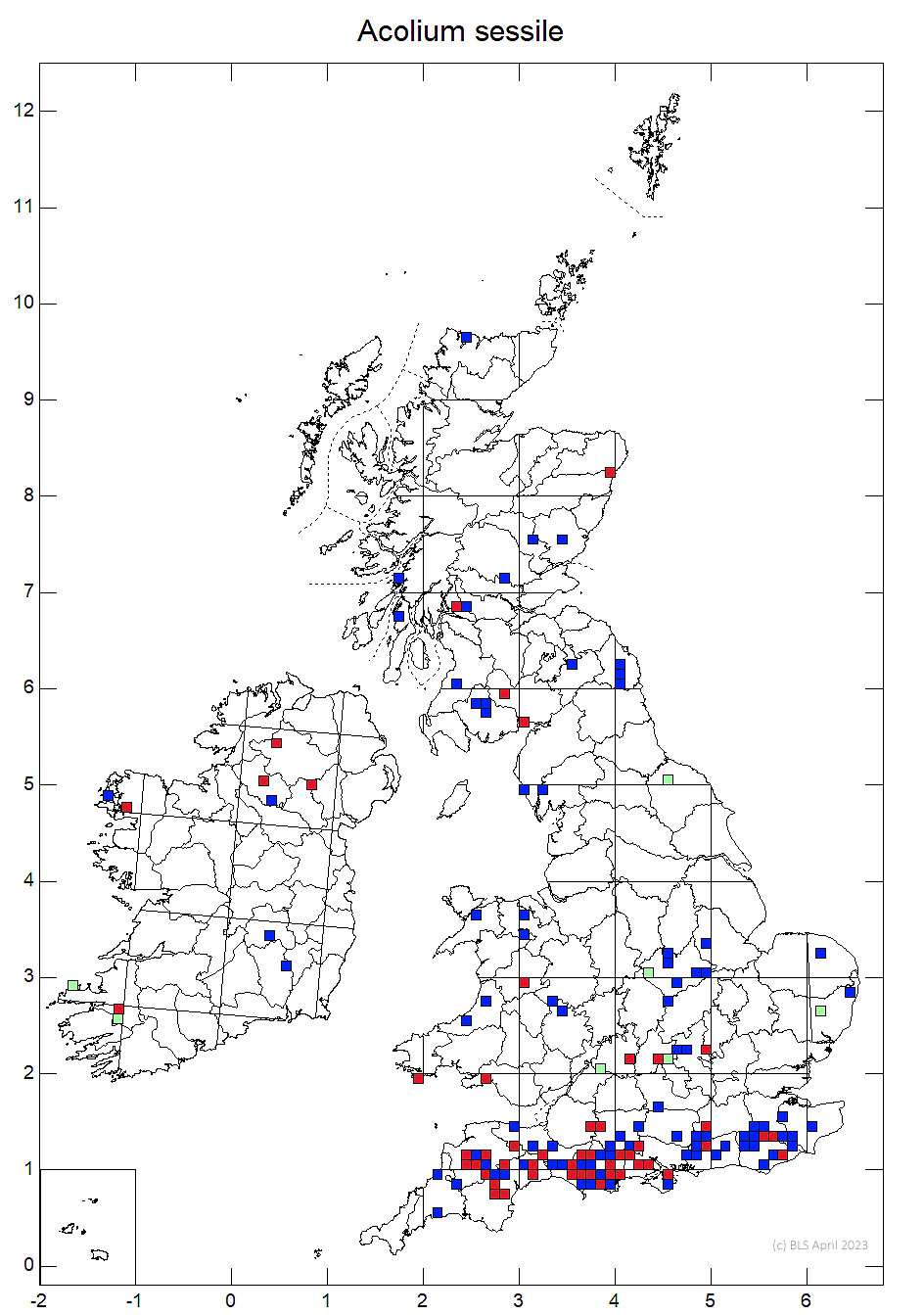Acolium sessile
Lichenicolous on Pertusaria coccodes, more rarely P. amara and P. albescens on trunks of old Oaks, which are typically open and well lit, the fungus is commensalistic to mildly pathogenic. Local and most freaequent in the south. A distinctive feature is that gently touching the apothecia wth a finger tip produces sooty spots from the loose spore mass, this is definative when combined with the parasitism on Pertusaria coccodes.
Thallus absent. Apothecia 0.25–0.6 mm diam., sessile, not pruinose; true exciple thick throughout, distinctly thickened at the base, and often forming a stalk immersed in the host thallus. Asci narrowly clavate, disintegrating at an early stage, the spores being released into a dry black powdery mass (mazaedium). Ascospores (10–) 12–15 × 6–9 μm, slightly constricted at the septum; surface coarsely helically striated, finally cracking irregularly, to give a complex pattern of helical ridges and irregular cracks. Lichen products only those of the host (norstictic acid in Pertusaria coccodes).
Acolium sessile causes considerable modification of the host thallus; it is usually darker in colour and the production of isidia or soredia of the host is partly suppressed. Specimens of A. inquinans on bark have larger apothecia and ascospores. For differences from A. marcianum, also parasitic on Pertusaria, see A. marcianum. Gently touching the apothecia wth a finger tip produces sooty spots from the loose spore mass.
On Pertusaria coccodes, more rarely Lepra amara and L. albescens, commensalistic to mildly pathogenic, on trunks of old Oaks, which are typically open and well lit.

Local, throughout Britain and Ireland, but commoner in the south.
Found on well lit mainly veteran Oaks in open habitats such as field trees, parkland and wood edges. There are few modern records beyond its core area of distibution in the south.
Britain: Notable
Cannon, P., Prieto, M., Coppins, B., Sanderson, N., Scheidegger, C. & Simkin, J. (2021). Caliciales: Caliciaceae, including the genera Acolium, Amandinea, Buellia, Calicium, Diploicia, Diplotomma, Endohyalina, Monerolechia, Orcularia, Pseudothelomma, Rinodina and Tetramelas. Revisions of British and Irish Lichens 15: 1-35.
Text by Neil A Sanderson, based Cannon et al (2021)



